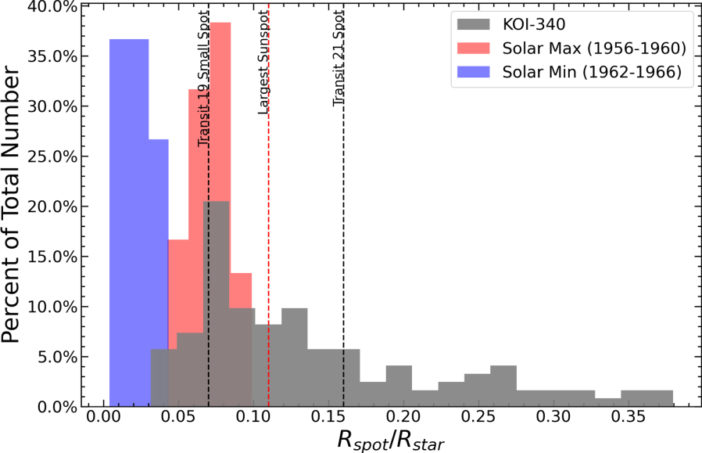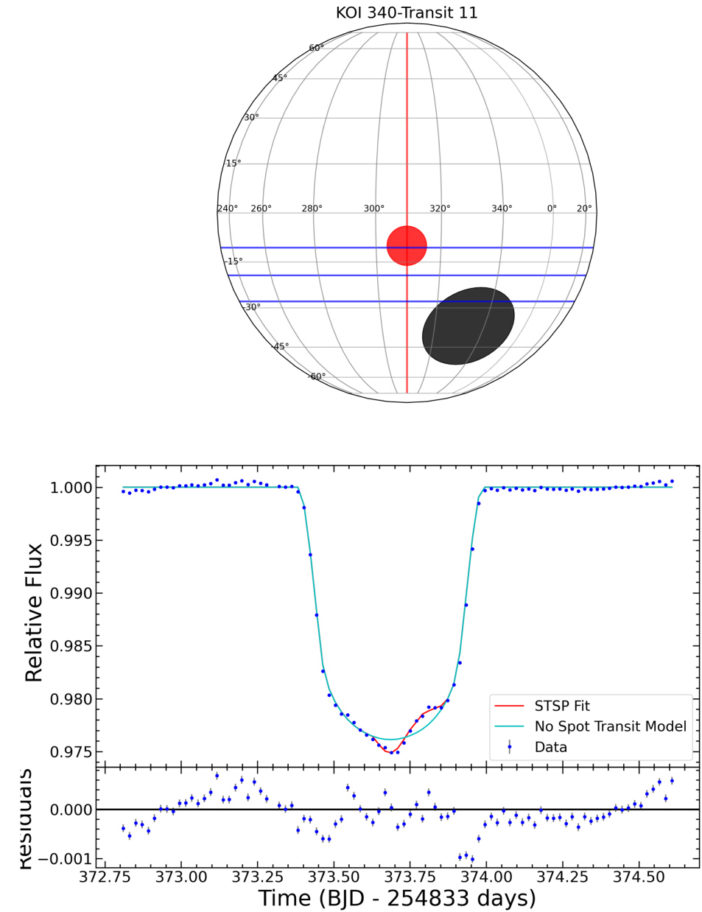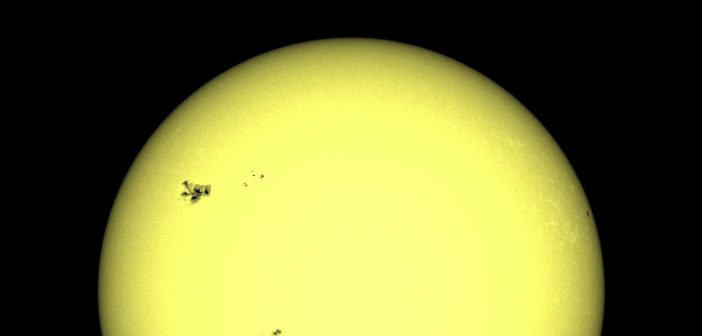Editor’s Note: Astrobites is a graduate-student-run organization that digests astrophysical literature for undergraduate students. As part of the partnership between the AAS and astrobites, we occasionally repost astrobites content here at AAS Nova. We hope you enjoy this post from astrobites; the original can be viewed at astrobites.org.
Title: Modeling Stellar Surface Features on a Subgiant Star with an M-dwarf Companion
Authors: Maria C. Schutte et al.
First Author’s Institution: University of Oklahoma
Status: Published in AJ
The authors of today’s article search for polka dots of concentrated magnetic flux on the surface of a subgiant star.
A Menagerie of Astrophysical Phenomena
The surface of a star hosts a menagerie of astrophysical phenomena: flares that dramatically increase the brightness of the star, coronal mass ejections that spew plasma into space, and cold, dark regions that grow and decay called starspots (check out this astrobite to learn more about stellar activity). Understanding this stellar activity is not only imperative for understanding stellar evolution, but also for studying the planets that orbit these stars.
The Many Uses of a Light Curve
One of the main ways that exoplanet scientists search for planets is with a technique called the transit method. Scientists monitor the brightness of a star, looking for a dip in that brightness. This dip can be caused by a planet passing, or “transiting,” in front of the star as seen from Earth. However, this graph of the brightness of the star — called a light curve — can also be used to detect other celestial happenings. Astronomers have used light curves to study binary star systems, supernovae, and — in the case of today’s article — starspots!
A Light Curve of Interest
The authors of today’s article studied the light curve of a star called KOI-340, where KOI stands for Kepler Object of Interest. KOIs are stars that were observed by the Kepler space telescope and are suspected to host exoplanets. This particular KOI is a subgiant star, which means that it is brighter and larger than a normal main-sequence star, but it is not as bright or as large as a giant star. KOI-340 also hosts a smaller, colder M-dwarf companion, making it a binary star system.
The light curve of KOI-340 was of interest to the authors because the depth of the planet’s transit is shallower than it should be if the star did not have any starspots. They therefore used a modeling code called STarSPot (STSP), which is publicly available on github, to model 36 transits of the planet orbiting KOI-340 to show evidence of starspots on the surface of the star. They found that the average radius of the starspots is roughly 10% the radius of the star, which would make these starspots some of the largest ever recorded (Figure 1).

Figure 1: This plot shows the radius distribution for the starspots on KOI-340 (grey), compared with the distributions for the sunpots when the Sun was at solar maximum (red) and at solar minimum (blue) over the same duration as the Kepler mission (four years). The black dashed lines show the size of the smallest starspot, found in Transit 19, and the main starspot, found in Transit 21. The dashed red line shows the size of the largest sunspot ever detected. [Schutte et al. 2022]

Figure 2: In today’s article, the authors modeled 36 transits of the planet orbiting KOI-340 to show evidence of starspots on the surface of the star. The top of this plot shows the location of the starspot found in Transit 21. The bottom of this plot shows the light curve with the fit from STSP (red line), compared to the fit if KOI-340 did not have any starspots (cyan line). The residuals are shown as blue points below the light curve. [Schutte et al. 2022]

Figure 3: Similar to Figure 2, the top of this plot shows the locations of the starspot and the bright spot found in Transit 11 (the black and red circles, respectively). The bottom of this plot shows the light curve with the fit from STSP, compared to the fit if KOI-340 did not have any starspots. The residuals are shown as blue points below the light curve. [Schutte et al. 2022]
In general, today’s authors show us how multifaceted starspots can be, as well as the splendor of polka-dotted stars!
Original astrobite edited by Maryum Sayeed.
About the author, Catherine Clark:
Catherine Clark is a PhD candidate at Northern Arizona University and Lowell Observatory. Her research focuses on the smallest, coldest, faintest stars, and she uses high-resolution imaging techniques to look for them in multi-star systems. She is also working on a Graduate Certificate in Science Communication. Previously she attended the University of Michigan, where she studied Astronomy & Astrophysics, as well as Spanish. Outside of research, she enjoys spending time outdoors hiking and photographing, and spending time indoors playing games and playing with her cats.
